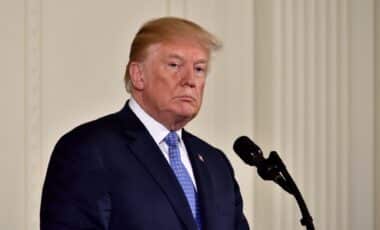The United States has launched a fresh wave of tariffs under Donald Trump’s renewed presidency, placing farmers once again at the forefront of global trade disputes.
With China, Europe, and other key partners preparing retaliatory measures, discussions have resumed within the White House over a potential multi-billion-dollar bailout for the American agricultural sector.
This potential aid package echoes the previous $23 billion relief effort undertaken during the 2018 trade war, aimed at shielding farmers from the economic fallout of disrupted international markets.
Now, with tariffs reaching even wider targets and climbing to unprecedented levels, the cost of protecting one of the Republican Party’s most loyal constituencies could be significantly higher.
Farmers Face Rising Costs as Key Export Markets Retaliate
The latest tariffs, which include a 10 percent blanket duty on all imports, are likely to provoke sharp countermeasures from major US trading partners.
According to The New York Times, retaliatory tariffs from China are already being implemented on vital American exports such as soybeans, corn, wheat, chicken, and cotton. The European Union has similarly prepared a comprehensive list of agricultural and consumer goods for potential levies.
In response, the US Department of Agriculture (USDA) is considering reactivating the Commodity Credit Corporation, a fund that can borrow up to $30 billion from the Treasury to offset income losses and stabilise market conditions.
According to Agriculture Secretary Brooke Rollins, the administration is “ensuring the infrastructure is ready” should the President instruct a deployment of aid.
Farmers have expressed concern about the long-term consequences of the trade war. Kenneth Hartman, President of the Corn Board of the National Corn Growers Association, told The New York Times that the most pressing worry is “losing market share to global competitors,” particularly if trade disruptions become protracted.
Previous Trade Wars Cost Billions and Reshaped Global Market Ties
During Trump’s first term, his administration’s aggressive tariff stance—particularly towards China—resulted in $27 billion in lost agricultural exports, according to USDA economists.
Although emergency relief efforts mitigated short-term losses, many export relationships were permanently altered, with foreign buyers turning to other suppliers such as Brazil and Australia.
This time, the White House is reportedly consulting with lobbying groups and Republican lawmakers to explore aid mechanisms. Some forms of direct assistance could require new legislation, adding another layer of complexity to an already contentious economic issue.
Meanwhile, the broader effects of the tariff policy are beginning to ripple across the economy. While farmers await clarity, federal job cuts linked to other budgetary priorities are expected to increase financial pressure on rural communities already facing uncertainty.









